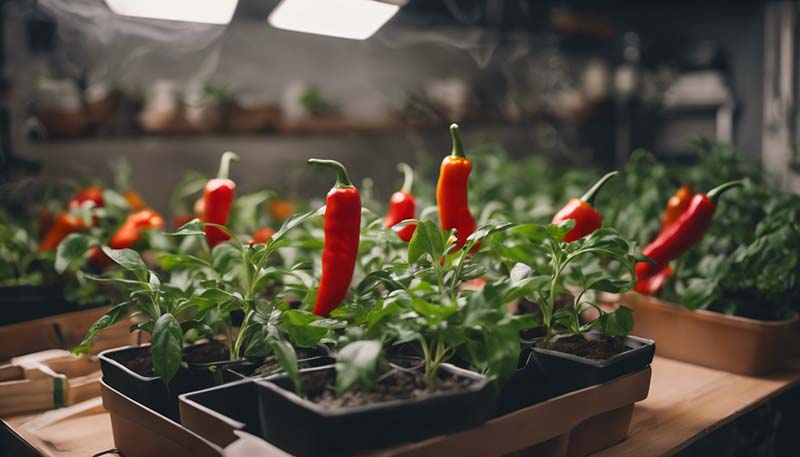Indoor Gardening: How to Grow Indoor Peppers
Growing peppers indoors can be a rewarding experience for gardeners, whether you're looking to extend your growing season, avoid pests, or simply enjoy fresh peppers year-round. Indoor peppers can be just as productive and flavorful as their outdoor counterparts with the right care and attention.
Introduction to Indoor Pepper Growing
Peppers are warm-loving plants that thrive in temperatures between 70-85°F (21-29°C). They are native to South America but have been cultivated around the world for their culinary and ornamental value. Indoor growing allows you to control the environment, providing the perfect conditions for your peppers to flourish.
Advertisement
Choosing the Right Varieties
When selecting pepper varieties for indoor cultivation, consider the following:
- Size: Choose compact varieties if space is limited.
- Heat Level: Indoors can sometimes be less predictable for heat control; opt for mild or sweet varieties if you're unsure.
- Maturity Time: Some peppers take longer to mature. Choose varieties that align with your patience and growing timeline.
Starting Seeds Indoors
Start your pepper seeds indoors 6-8 weeks before the last expected frost date. Here's how:
- Fill seed trays or small pots with seed-starting mix.
- Plant seeds about 1/4 inch deep and water gently.
- Cover with a plastic dome or place in a propagator to maintain humidity.
- Place in a warm location with a temperature of around 75°F (24°C).
- Ensure the seeds receive light, either from a sunny windowsill or supplemental grow lights.
Seedling Care
Once your seeds have sprouted, provide the following care:
- Light: Peppers need plenty of light. Aim for 14-16 hours of light per day.
- Watering: Keep the soil consistently moist but not waterlogged.
- Thinning: When seedlings have at least two sets of true leaves, thin them out, leaving the strongest plant per cell or pot.
- Fertilizing: Use a balanced, water-soluble fertilizer every two weeks, starting when the first true leaves appear.
Transplanting Indoor Peppers
Transplant your pepper seedlings into larger pots or your indoor garden once they have 3-4 true leaves and the risk of frost has passed. Be gentle to avoid damaging the roots.
Providing the Right Environment
- Temperature: Maintain a steady temperature between 70-85°F (21-29°C). Avoid drafts and sudden temperature changes.
- Light: Peppers are喜光植物 (light-loving plants). Ensure they receive at least 6-8 hours of bright, direct light daily.
- Humidity: They prefer moderate humidity. Mist regularly or use a humidifier if needed.
- Soil: Use well-draining soil rich in organic matter.
- Support: As the plants grow, provide stakes or cages for support.
Feeding and Watering
Continue to water your indoor peppers regularly, allowing the top inch of soil to dry out between waterings. Use a balanced fertilizer, following the package instructions for frequency and dosage.

Harvesting Indoor Peppers
Peppers are typically ready to harvest 60-90 days after transplanting, depending on the variety. They are usually harvested when they have reached their full color, which is an indication of maturity.
Common Problems and Solutions
Here are some common issues you might encounter and how to address them:
- Leggy Growth: Insufficient light can cause leggy plants. Increase light exposure or use grow lights.
- Yellowing Leaves: Overwatering can cause yellowing. Ensure proper drainage and adjust watering habits.
- Fungal Diseases: Maintain good air circulation and avoid high humidity to prevent fungal issues.
Conclusion
Indoor pepper growing can be a fulfilling and productive endeavor. With the right environment, care, and attention, you can enjoy a steady supply of homegrown peppers. Experiment with different varieties and growing techniques to find what works best for you and your indoor garden.
Comment